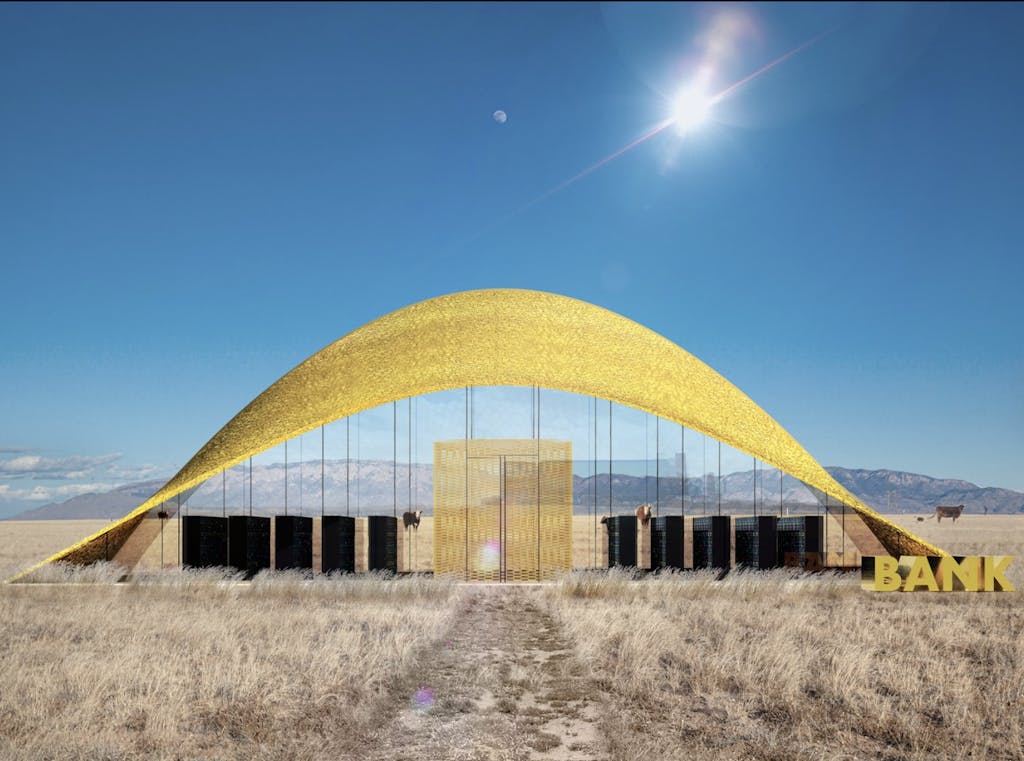Jamie Diamond as part of 'Monte di Pietà' a project by Christoph Büchel at Fondazione Prada, Venice, Italy
'The Dick Stanley Request', 20 APR – 24 NOV 2024

'The Dick Stanley Request' by Jamie Diamond is part of the project 'Monte di Pietà'conceived by artist Christoph Büchel and presented by Fondazione Prada at Ca’ Corner della Regina during the Venice Biennale.
Jamie Diamond
After the catastrophic banking failures of 1929, public trust was nearly obliterated. To regain this trust, the banking system adopted a new, progressive architectural style to symbolize its transformation. This new, open, and efficient architectural approach incorporated nontraditional design elements, helping to restore public confidence.
Now, in the aftermath of the Great Recession and the rise of the Crypto Metaverse, banking is once again in flux. What does the future hold for traditional banking in the face of decentralized finance and blockchain technology? Are we creating an architectural model for the future of banking, or are we building a monument to its obsolescence?
Gordon Kipping's proposal was inspired by the concept behind Elmgreen & Dragset's Prada Marfa, where an interior can be seen but not entered.
Sotirios Kotoulas proposed an inverted stone pyramid carved into the earth" designed to "mediate energy flows and frame the sky and landscape.
Studiometria Design Group with its mirrored, elongated facade aims to achieve dematerialization. Positioned against the Sandia Mountains, it appears to float above the desert and is approached via a walkway lined with illuminated bollards.
enFOLD Collective envisions a future where gold becomes so worthless that it is used as a solid building material. In this scenario, a gold dome houses a "concourse of servers hosting clients' blockchain data." At the center, a smaller vault made of gold bars "encases a private sanctum where clients can fund, transfer, and mine their crypto accounts.
David Bers Architecture drew inspiration from SOM’s Chase Manhattan Bank, which was completed in 1961 and demolished in 2021 to make way for Chase’s new headquarters. His proposal is a virtual reconstruction of the building, "populated by spirits of Albuquerque’s indigenous animals, who act as surrogate guides for Mr. Stanley in an interactive bank experience.
"On March 1st, 2015 at 7:01pm, I, Jamie Diamond, a female visual artist and Professor at the University of Pennsylvania, received an email from Mr. Dick Stanley, incorrectly assuming I was Jamie Dimon, the CEO of JP Morgan Chase, asking why there were no Chase Banks in Albuquerque, New Mexico. In response to his email, I traveled to Albuquerque, explored potential sites for development, and decided to enlist a group of architects to design theoretical Chase Bank Branches, in an attempt to fill the Albuquerque vacuum. The resulting project is called, “The Dick Stanley Request”." – Jamie Diamond
222 East Society draws inspiration from Chase’s octagonal logo, designed in 1961 by Chermayeff & Geismar Associates. It proposes a boutique interior space that can transform into an event venue for community gatherings after business hours.
The layered history of the 18th-century palazzo Ca’ Corner della Regina – venue of the Monte di Pietà of Venice from 1834 to 1969 – serves as Büchel's framework for constructing an intricate network of spatial, economic, and cultural references within an immersive environment that takes over the palazzo.
The exhibition, featuring historical and contemporary works, new installations, and a wide array of objects and documents, highlights the history of property, credit, and finance, the evolution of collections and archives, and the creation and significance of real or artificial wealth.
Installation views of “Monte di Pietà”, a project by Christoph Büchel. Fondazione Prada, Venice. Photo: Marco Cappelletti. Courtesy: Fondazione Prada
“Debt is also closely related to the practices of storage and accumulation of tangible and intangible resources. The art system, specifically museum institutions, plays a significant role in preserving heritages and collections and assigning symbolic and economic value to goods and objects.”
- Christoph Büchel